Can You Freeze Celery? [Yes, Here’s How]
Bought a couple of celery heads and worried some of them will spoil? If so, you’re probably looking for a way to store them for a prolonged period, and freezing is the first thing that comes to mind.
So, can you freeze celery?
You can freeze celery by cutting it up, pre-freezing on a cookie sheet, placing in a freezer bag, and putting it in the freezer. The veggie will be less crispy and a bit bland after freezing, but still good enough to use in cooked dishes. For best results, blanch the celery before pre-freezing.
That’s the gist of it.
Want to learn more? Here’s what we cover below:
- how freezing affects celery (does it freeze well?), and if freezing cooked celery is also an option
- freezing celery step by step, including whether or not you should blanch it
- defrosting and using frozen celery
Let’s jump right in.
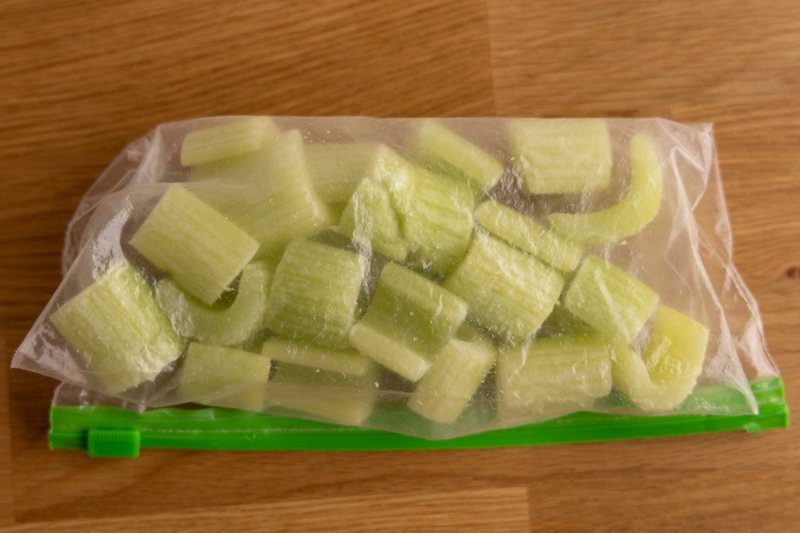
Can You Freeze Celery?
Celery stalks freeze quite alright, but not great. Like most veggies, they lose some of their crispness and flavor in the process, so they’re definitely not as good after defrosting as they were fresh. Fortunately, they still work well in cooked dishes and smoothies.
In other words, you can use frozen celery in smoothies, soups, casseroles, and similar dishes, but not when prepping a bowl of coleslaw or ants on a log snack. Reserve fresh celery sticks for those because a half-limp stalk would ruin the quality of the dish.
Related: How long does coleslaw last?
Here’s what thawed celery piece looks like:
As you can tell, it doesn’t look (and feel) nearly as nice and crisp as a fresh one does. That’s why I recommend using it in smoothies and cooked dishes only.
Next, remember that celery lasts for more than a week if you refrigerate it, so if yours is still fresh you have some time to use it. And maybe you can avoid freezing it whatsoever.
Related: How long does celery last?
Last, while most people freeze raw celery, you might have some cooked or sauteed that you’d like to freeze. Let’s cover that.
Can You Freeze Cooked/Sauteed Celery?
While freezing raw celery is a much better option, freezing stalks that have been cooked or sauteed is also possible. So if you want to cook a bunch in one go or already have some leftovers you can’t use anytime soon, feel free to freeze them.
Please remember that cooked or sauteed celery will end up even more soft and mushy than regular celery after thawing. If that doesn’t bother you, you’re good to go.
Last but not least, blanching celery that’s already cooked makes no sense (it’s almost the same thing), so skip that step if you’re working with pre-cooked celery.
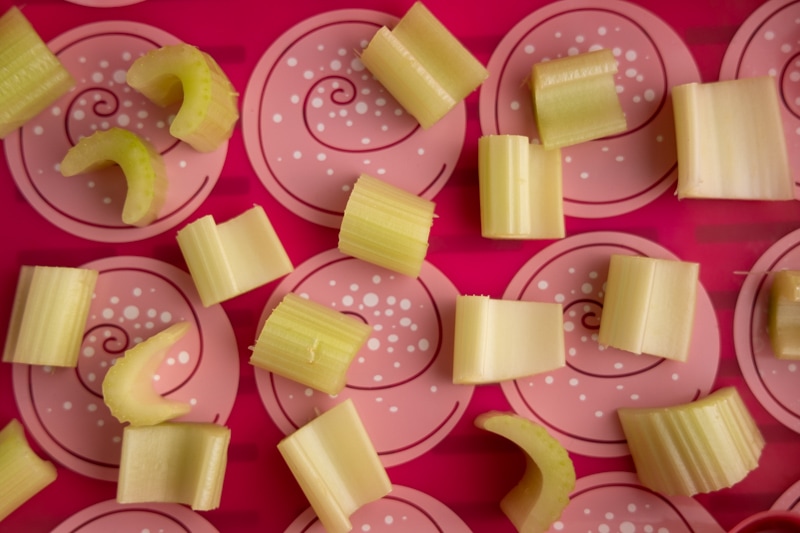
How to Freeze Celery
Here’s how you freeze celery:
- Wash and dry. Wash the celery ribs and let them dry. Remove any extra moisture using paper towels before you continue.
- Slice. Trim both ends and slice them. While most people suggest going for 1-inch lengths, go with whatever makes sense for your needs. The size doesn’t matter that much.
- Blanch (or not). If you care about the quality of the celery or want it to keep well for months, blanching is worth it. Otherwise, you can probably skip it. I discuss the how and the pros and cons of both options below.
- Pre-freeze. Grab a cookie sheet and arrange the celery pieces on it in a single layer in a way they don’t touch each other. This way, the segments won’t freeze together and form a big clump, but instead, you’ll be able to grab a couple of slices whenever needed. Some sticking is okay, and you can fix this later. Once arranged, put the tray in the freezer and leave until the celery lengths freeze solid. 3 to 4 hours is usually enough, but leaving everything in the freezer overnight is also an option.
- Transfer to freezer containers. Pour the pre-frozen veggie pieces into a freezer bag, label it with name and date if you like, squeeze all the air, and seal it tight.
- Freeze. Place the bag(s) in the freezer.
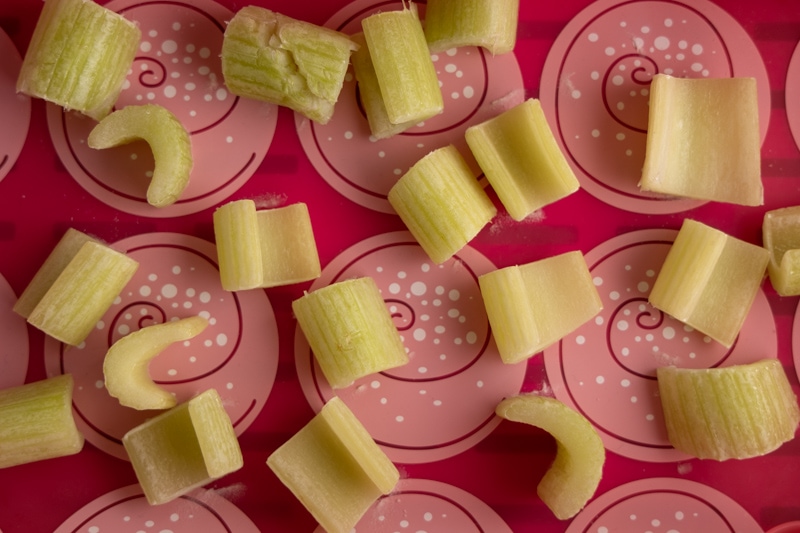
Now, you might be wondering how long can celery last in the freezer. While there isn’t a definitive answer, reputable sources suggest 10 to 12 months if you blanch it and only a couple of months if you don’t.
Of course, celery won’t ever go bad in the freezer, but it will gradually lose quality. And if you skip blanching, the quality loss process speeds up a lot.
That brings us to whether or not you should blanch your celery before freezing.
Should You Blanch Celery Before Freezing?
The short answer is: it depends.
Most articles recommend blanching because it helps celery retain texture and flavor for much longer. As I mentioned above, blanched celery is supposed to keep quality for even a year, while an unblanched one for only 2 to 3 months.
While the difference between periods is huge, it’s difficult to tell how big the difference in quality is and if you’ll even notice it. If you’re using that celery in a smoothie or to make stock, you probably won’t.
For other recipes, it depends on how much celery they call for compared to other food products. If celery isn’t the star of the dish, you will hardly notice a difference. But if you plan on freezing celery for celery soup, spending that 15 minutes on blanching might be well worth it.
Plus, let’s be honest – you probably have better things to do than blanching. While the process is super simple and doesn’t require any fancy equipment, it takes at least 10 to 15 minutes to blanch a couple of celery ribs. And the more celery you have, the longer the procedure takes.
So if blanching is the only reason you’re postponing freezing your celery (been there), skip it and get it done. Without blanching, the whole thing takes like 5 minutes.
I hope those musings have helped you choose whether or not you should blanch your celery. Now, let’s talk about the process in detail.
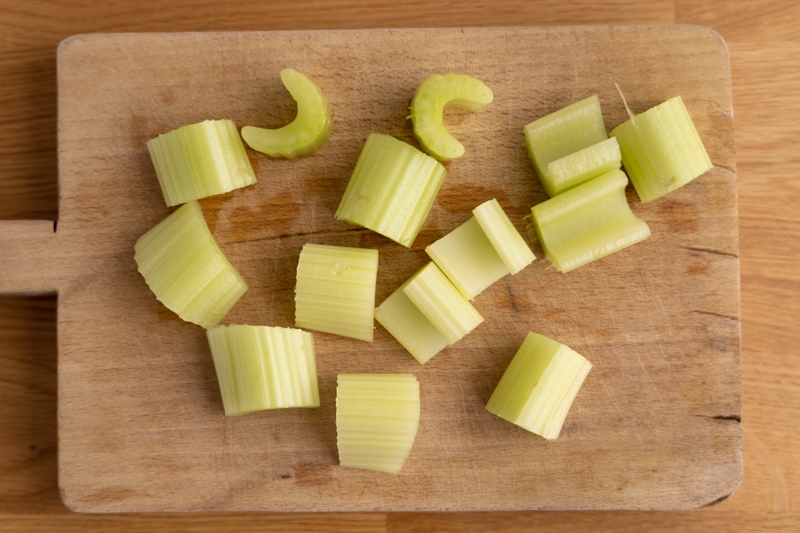
How to Blanch Celery for Freezing
Here’s how to water blanch celery:
- Bring a pot of water to a boil.
- Prepare a pot of ice-cold water. Add some ice cubes if possible. A sink of cold water will also do the trick.
- Plunge the celery in the boiling water and let it cook for 3 minutes.
- Use a slotted spoon to transfer the celery from the boiling water into the ice water. Let it cool for about 3 to 5 minutes.
- Drain the celery pieces and dry them thoroughly before pre-freezing.
If you’re working with a whole bunch of celery stalks, blanch them in batches, and replace the water every time it’s no longer cold. Or at least add some extra ice cubes to make up for the added heat.
When it comes to blanching time, the 3-minute period is perfect for 1-inch long segments. If you chopped yours into smaller ones, reduce the time accordingly. Do the same if your celery ribs are relatively small and thin.
How to Defrost Celery?
When it comes to thawing celery, there are two options to choose from:
- Defrosting in the fridge. You transfer the celery you need to the refrigerator the night before, and it’s nice and thawed in the morning. Make sure the veggie sits in a sealed container or bag, and expect some moisture after defrosting. Remove that moisture before using the celery. If you’re defrosting a whole bunch of celery that froze together, note that it might take more than 6 to 8 to thaw.
- Throw it in frozen. For smoothies, stock, and most soups, you don’t need to defrost the celery before using it. You can throw it in frozen, and it’ll thaw quickly as everything else warms up (for cooked dishes), or make sure your smoothie is nice and cool even without any ice cubes.
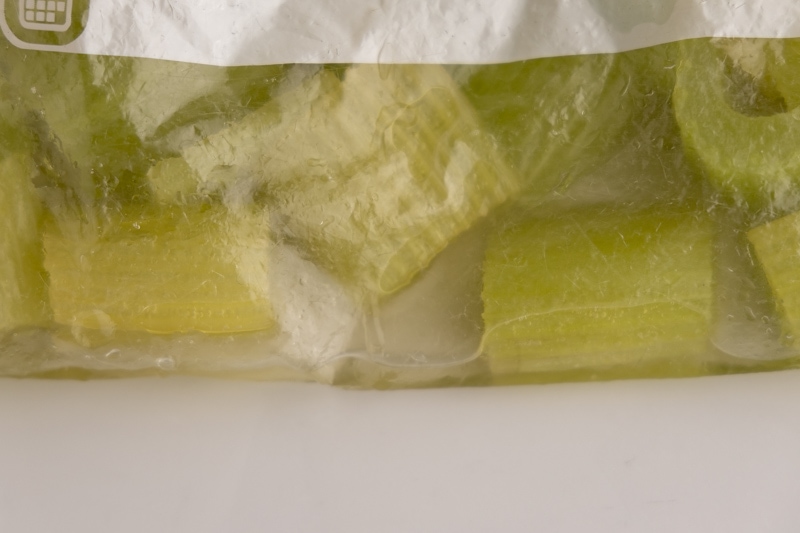
In most cases, you should be able to throw in the celery frozen, and that’s why we’re doing all the prep before freezing.
Pre-freezing the veggie also helps, as it allows you to quickly grab as many celery pieces as you need for whatever you’re cooking and promptly return the rest to the freezer.
How to Use Frozen Celery?
Frozen celery works best in smoothies and cooked dishes. Some examples include:
- Smoothies. You can throw in a celery stick or two to almost any smoothie, so that’s the easiest way of using your frozen celery.
- Celery soup. (Here’s a quick and simple recipe.)
- Stock. Celery works great in veggie, meat, and even fish stock.
- Roasted vegetables.
- Chilis.
- Roasted chicken.
- Anything else that’s cooked or baked in the oven and uses celery.
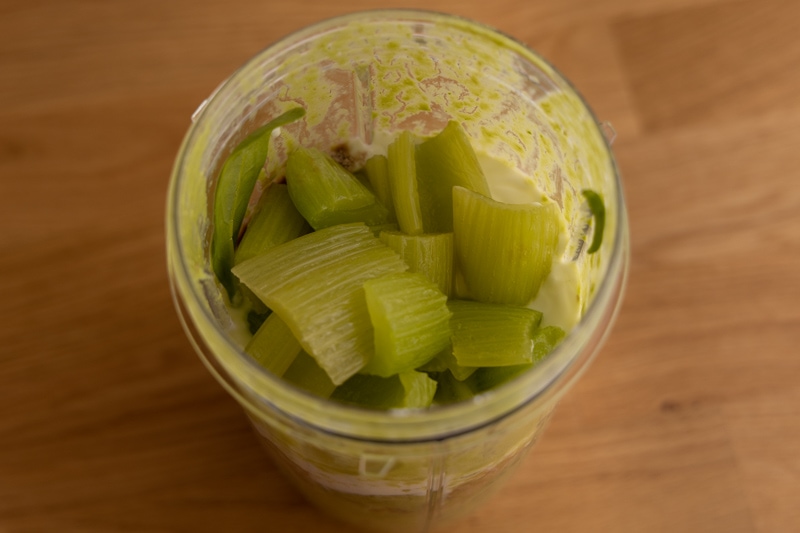
Last, let me remind you that frozen and defrosted celery is soft and mushy, the same way chives are soft after freezing and defrosting. Therefore, it doesn’t work well in dishes that use raw celery, like coleslaw and other salads.
I already mentioned that in my article on storing celery.
Rotten Records: Share Your Snap!
Caught some food past its prime? Upload your photo to “Rotten Records” and help others spot the signs of spoilage. Every image makes our food community safer and more informed!


![How to Tell if Kale Is Bad? [4 Spoilage Signs]](https://www.doesitgobad.com/wp-content/uploads/kale-spoilage-signs-infographic-1-768x512.jpg)
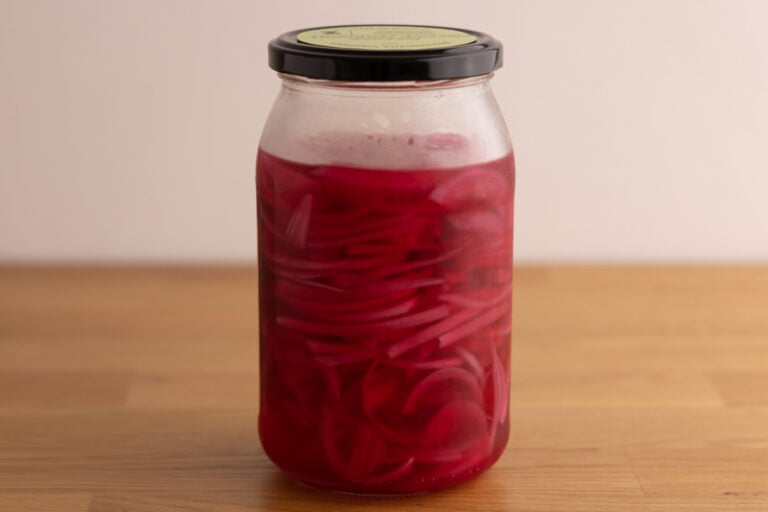
![How to Tell if a Sweet Potato Is Bad? [4 Spoilage Signs]](https://www.doesitgobad.com/wp-content/uploads/Inside-of-old-sweet-potato-768x512.jpg)
